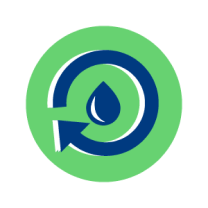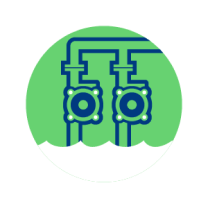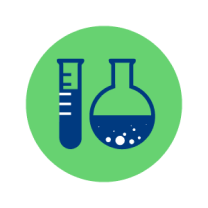Integrated Management Plan (IMP)
Increasingly complex water quality issues and growing service demands continue to require major capital investments that will impact the County’s financial and management resources. The County has initiated an Integrated Management Plan (IMP) with the goal of developing a prioritized and balanced infrastructure investment strategy across the County’s service area over the next 30 years. Read the full plan here.
DPW manages a significant number of assets and has made considerable investments to upgrade wastewater treatment capabilities, manage stormwater runoff, and restore impervious surfaces.
-
7 water reclamation facilities
-
308 pump stations
-
9 water treatment facilities
-
1,000 miles of stormwater piping
-
1,300+ miles of gravity sanitary sewer lines
-
1,400+ miles of water distribution piping
DPW must prioritize future improvements to continue to provide cost-effective and reliable service, protect environmental quality, and enhance the surrounding communities. Addressing the most critical environmental and public health issues first will allow DPW flexibility to develop options for long-term infrastructure needs. DPW is using the Integrated Municipal Stormwater and Wastewater Planning Approach Framework to guide the planning process. This approach allows DPW to develop a long-term investment strategy to address system-wide infrastructure needs, improve water quality, and improve regulatory certainty over time.
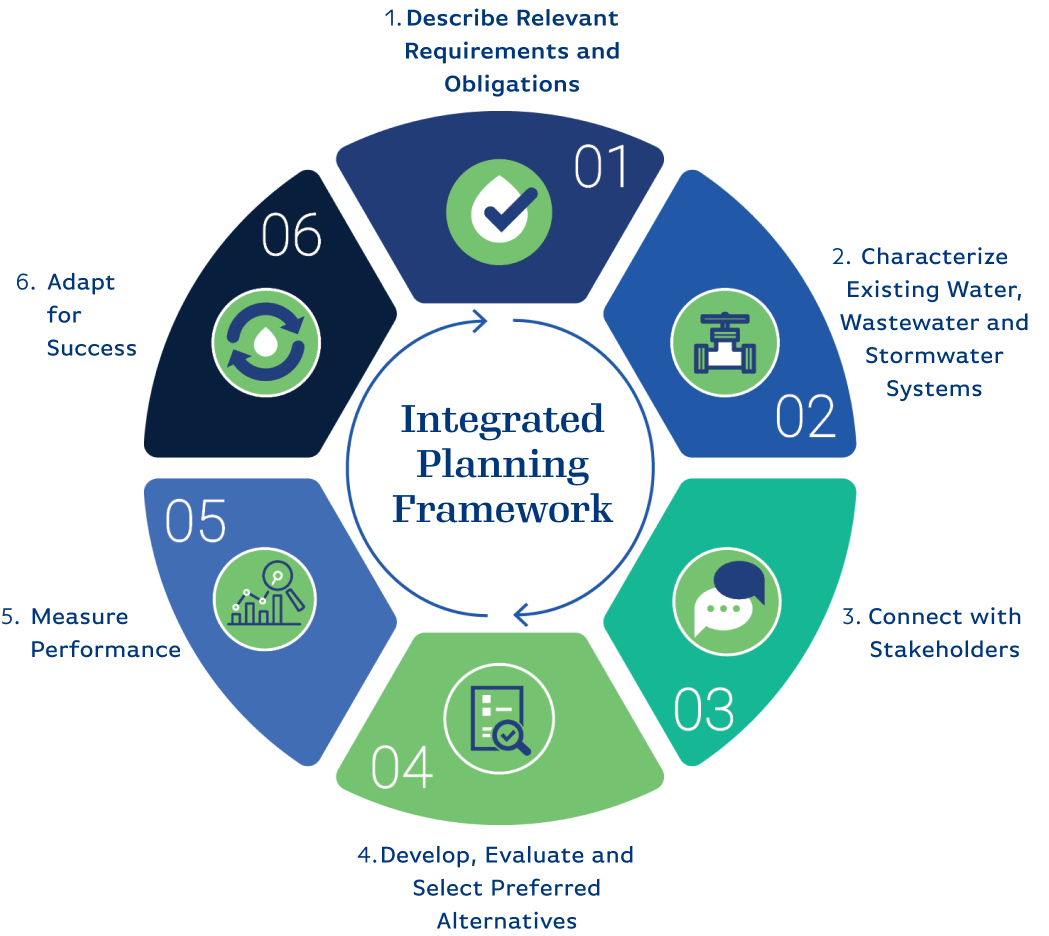
DPW has developed a 30-year program schedule that addresses critical public health and environmental issues first, while appropriately balancing revenue requirements and ability to deliver capital improvements effectively and efficiently. DPW has identified approximately $3.5 billion in potential projects and solutions over the next 30 years to address all currently forecasted system-wide capital and programmatic needs.
Draft 30-Year IMP Program Budget
(2022-2051)
- Water and Wastewater Planning
$56M - Biosolids
$70M - Miscellaneous Wastewater Projects
$95M - Wastewater Treatment Facilities
$118M - Miscellaneous Water Projects
$224M - Managed Aquifer Recharge (MAR)
$357M - Septic-to-Sewer
$358M - Watershed Protection
$410M - Water Treatment Facilities
$467M - Distribution System
$514M - Collection System
$845M
Regulatory Drivers
The IMP addresses utility and regulatory drivers expected to demand resources over the coming years. Investments will be driven by nutrient reduction, climate change, sea level rise, and the beneficial reuse of waste products. DPW must also prioritize major water and wastewater facility upgrades mandated by regulatory requirements. These regulatory drivers include the ongoing or anticipated nutrient reduction requirements within the Chesapeake Bay total maximum daily load (TMDL).
Utility Drivers
On-Site Wastewater Management Problem Areas
The Anne Arundel County Department of Health has identified 33 areas within the County that present the greatest risk for problems such as high water table, small lot size, impermeable soil, or excessive slope. Failing septic systems also pose a significant risk to nearby domestic wells and surface water bodies.
Resource Recovery and Waste Acceptance
The County’s progressive approach to reusing waste byproducts reduces overall environmental impacts and operating costs. The Bureau of Utility Operations contracts with private companies for biosolids management, and agricultural land application is the County’s primary method of biosolids use.
Sea Level Rise/Inundation
County-owned sewer systems are among the areas vulnerable to sea level rise. Private wells and septic systems are also susceptible to the impacts of sea level rise, especially in areas where private wells are close to septic systems.
Water Supply Resiliency
Population growth in and around the County raises questions about the sustainability of current water resource management practices. This provides an opportunity to explore innovative solutions for recharging the groundwater aquifers that supply the County’s drinking water.
Our wAAter
The IMP also includes projects within the Our wAAter program, which is an overarching strategy to improve the health of Anne Arundel County waterways and the Chesapeake Bay, while strengthening the County’s water resiliency. This management strategy will achieve long-term compliance with the Phase III Watershed Implementation Plan and a goal to reduce Total Nitrogen by 115,000 pounds per year.
Integrated Program with Our wAAter Strategy
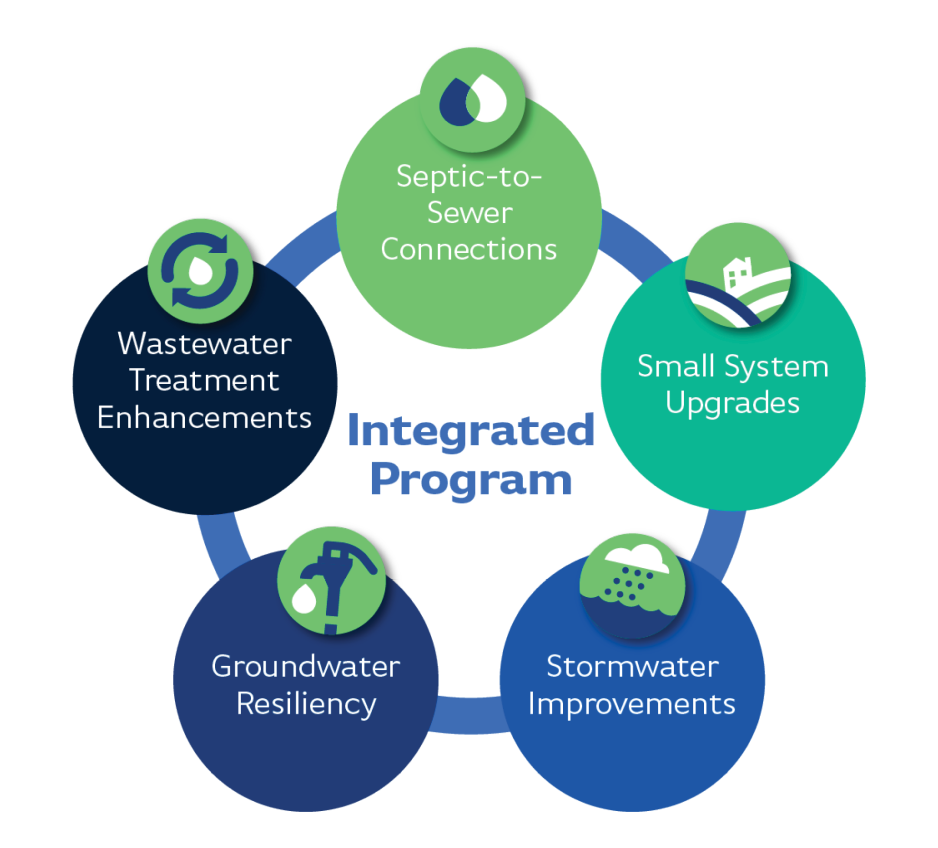
Prioritizing Investment in Water
To continue to provide cost-effective and reliable service, protect environmental quality, and enhance the surrounding communities, DPW understands that future program improvements will need to be prioritized to address the most critical environmental and public health issues first. Projects that maintain regulatory compliance and protect water quality and human health are the highest priority for serving County residents, and projects within the Our wAAter Program are among this top tier of projects. While other projects that support existing capacity and/or future service area needs are generally lower tier projects, DPW will explore opportunities for improving efficiency and sustainability as we strive to continually improve our services.
